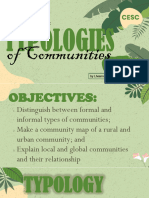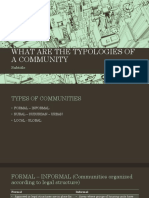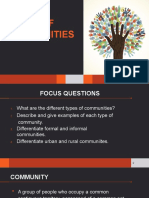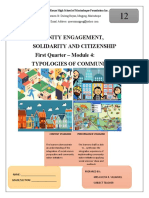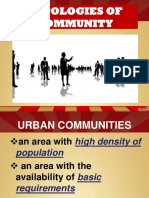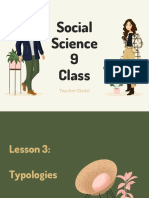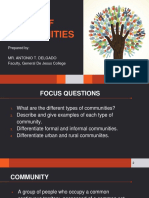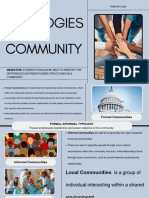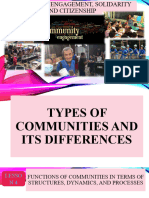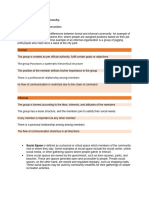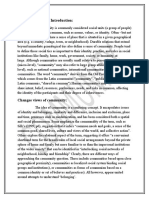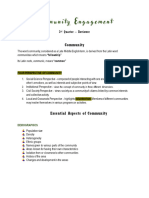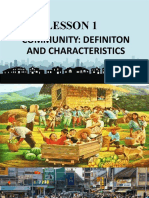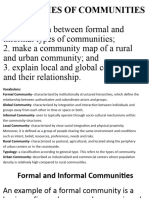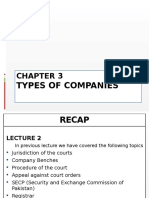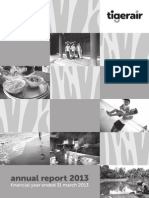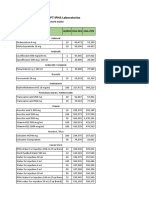0% found this document useful (0 votes)
85 views9 pagesCESC Week 4 Differentiating Typologies of Community
The document differentiates between formal and informal, rural and urban, and local and global community types based on characteristics like structure, population density, and geographical proximity. Formal communities have official hierarchies while informal communities form based on shared interests. Rural communities have lower population density and specialize in particular livelihoods, while urban communities have higher density, diversity, and industry.
Uploaded by
tkrsjssCopyright
© © All Rights Reserved
We take content rights seriously. If you suspect this is your content, claim it here.
Available Formats
Download as PDF, TXT or read online on Scribd
0% found this document useful (0 votes)
85 views9 pagesCESC Week 4 Differentiating Typologies of Community
The document differentiates between formal and informal, rural and urban, and local and global community types based on characteristics like structure, population density, and geographical proximity. Formal communities have official hierarchies while informal communities form based on shared interests. Rural communities have lower population density and specialize in particular livelihoods, while urban communities have higher density, diversity, and industry.
Uploaded by
tkrsjssCopyright
© © All Rights Reserved
We take content rights seriously. If you suspect this is your content, claim it here.
Available Formats
Download as PDF, TXT or read online on Scribd
/ 9

